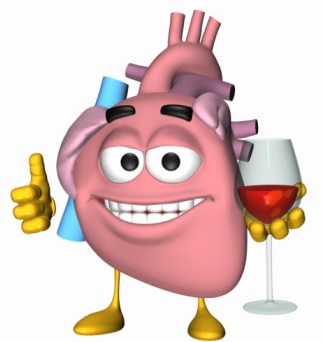Can we help you?
Contact us

Can we help you?
Contact us

Thank you for contacting us
Your form has been submitted successfully Our team will contact you again as soon as possible.
Whooppss...!! An error has occurred
Try sending later or write an email directly to areaempresas@ua.es

 PATENTED TECHNOLOGY
PATENTED TECHNOLOGY
INFO
SHEET
DOWNLOAD
EXECUTIVE
ABSTRACT
CONTACT DETAILS: Research Results Transfer Office-OTRI
University of Alicante
Tel.: +34 96 590 99 59
Email: areaempresas@ua.es
http://innoua.ua.es
It has been developed a simple biotechnological method to obtain and accumulate high amounts of antioxidant resveratrol from natural resources.
It has been optimized plant cell culture conditions in bioreactors in order to obtain more than 4 grams of resveratrol per litre of culture, easily to extract and purify.
The research group is looking for companies interested in acquiring the technology for commercial exploitation.

The research group Plants proteomics and functional genomics from University of Alicante has developed a simple method to obtain and accumulate high amounts of extracellular resveratrol from grapevine cell cultures. It has been optimized plant cell culture conditions (elicitors addition, incubation time, etc.). This novel procedure provides more than 4 grams of resveratrol per liter of culture, easily to extract and purify.
The method consists in the following steps:
• Adding the right mix of bio-stimulants to the culture medium.
• Combining cells that produce resveratrol with culture medium obtained before.
• Incubating the previous composition under determined conditions of temperature, humidity, photoperiod, etc.
• Separating the obtained resveratrol from the culture medium.
• Purification of resveratrol.
Resveratrol is found in grapevine and other kind of products derived from it (wine, must, etc.) in limited quantities that requires complex processes to recovery it. In this sense, it is important to have an alternative natural source which allows obtain it in high quantity to satisfy international demand.
The main advantages of this technology versus currently are the following:
• Accumulation of resveratrol is mainly extracellular, so its extraction and purification is really easy.
• It is not necessary to lyse live cells to recover resveratrol.
• Cell culture can be used several cycles to continue production.
• Its average productivity is more than 4 grams per liter of fresh culture.
• It is a sustainable technology because it does not exploit a natural resource.
• It is an unlimited source of raw material.
• Its production does not depend on climatic, seasonal or geopolitical factors.
• Cell cultures can satisfy resveratrol demand at any time and any quantity.
• This technology is environmentally friendly because waste generation is insignificant compared with extraction from wine by-products.
• Few waste generated, such as antioxidant proteins or stem cells, are potentially recoverable in cosmetics, nutraceuticals, etc.
• Important efficiency of the process allows a high production of resveratrol with low consumption of raw materials.
• Trans-resveratrol (bioactive molecule of interest) is generated almost exclusively (> 98%), compared to cis-resveratrol (1-2%).
• Extract obtained has a high purity in resveratrol (> 70%).
After many trials, it has been optimized experimental conditions and developed a simple method to obtain and accumulate high amounts of extracellular resveratrol.
It has been scaled-up in different commercial bioreactors (stirred tank, air-lift, etc.) and carried out successfully up to 20 liters, achieving higher yields than in small laboratory flasks. At industrial level, plant cell cultures can be scale-up to thousands of liters.
Currently, this is the most efficient worldwide technology to obtain resveratrol from grapevine with high purity and free of other polyphenols.

Growing and harvesting operations
Resveratrol is a biologically active substance with antibiotic and pharmacological broad-spectrum activity. It has demonstrated benefits on health, and for this reason, it is desirable its inclusion in human and animal diet. Furthermore, it constitutes an interesting way to reduce the incidence of cancer and cardiovascular diseases. Moreover, it is effective to prevent atherosclerosis and as anti-inflammatory agent, antioxidant, vasodilator and platelet antiaggregate. Therefore, it provides nutritional and therapeutic benefit in the following industrial sectors:
• Cosmetics
• Nutraceuticals
• Pharmaceuticals
• Medicine
• Biotechnology
• Food industry
• Dietary supplements
• Feed supplements
Research group is looking for companies interested in acquiring this technology for commercial exploitation through:
• Licensing agreement.
• Funding opportunities to develop new applications.
• Scaling-up industrial level.
• Fitting specific needs of the companies.
• Developing R&D projects.
Agreements on technology transfer or knowledge transfer.
This technology is protected by national patent:
• Title: "Combined use of methyl jasmonate and cyclodextrins for production of resveratrol".
• Application number: P200800591
• Application date: 29th February 2008
In addition, protection has been extended to Europe:
• Application number: EP09715647.5
Biology
Molecular Biology and Biotechnology
Pharmacology, Cosmetics and Ophthalmology
Medicine and Health
Carretera San Vicente del Raspeig s/n - 03690 San Vicente del Raspeig - Alicante
Tel.: (+34) 965 90 9959





